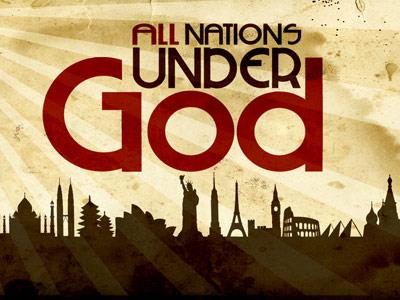-
The "end Times"
Contributed by Byron Perrine on Jul 9, 2019 (message contributor)
Summary: A sermon designed to lessen anxiety over the "end times" and redirect attentiveness to more immediate concerns and responsibilities.
(If you found this sermon to be helpful please visit us at www.HeritageRestorationProject.org or www.ChristianWisdom.info)
While the sections of the Gospel that deal with the end times, the culminating battle between good and evil, clearly instruct the Christian to watch and be ready, there is a great deal of disagreement among Christians as to the meaning of these portions of the Scripture. Jesus said of the end times that, “of that day and hour no one knows, not even the angels in heaven, nor the Son, but only the Father” (Mark 13:32)”. And in Daniel 12:9 we are told that the meaning of Daniel’s vision of the end times is “closed up and sealed till the time of the end.” Notwithstanding, many Christians remain interested in the study of Matthew Chapter 24, Mark Chapter 13, Luke Chapter 21, Daniel 10:14-12:13, and Revelation, a book at the end of the New Testament also sometimes referred to as The Apocalypse, all of which deal with the end times.
During the season of Advent, which leads up to Christmas, Christians customarily read the Old Testament prophecies foretelling the birth of Christ. This aspect of prophecy, the revealing of something about things to come in the future, is an important part of our Christian tradition. Regarding the period of time following the birth, ministry, crucifixion and resurrection of Jesus, historically there have been six approaches to understanding the Bible’s foreshadowing or foretelling of future events. These various interpretations include:
1) Interpretations of the New Testament prophecies as metaphorical or allegorical in nature neither predicting nor pertaining to any particular historical time frame, specifics, or particular sequence of events.
2) Interpretations which are historical in nature but which identify only the general direction of history and do not predict specific events.
3) Historical interpretations which explain the prophecies as applying to events that took place among the Jews and Romans during the first few centuries after Christ, all having been fulfilled during that period.
4) Historical interpretations which explain the prophecies as applying to the Reformation, all having been fulfilled during that period.
5) Interpretations which see none of the predictions as being fulfilled and all yet to take place.
6) Interpretations which see some of the prophecies having been fulfilled in historical or current events and some yet to take place before the end of the world.
Turn on the TV to any of the religious broadcasting networks and will likely find preachers expounding about prophecies pertaining to the latter days and the end of the world as we presently know it. What most of these preachers are saying fits into categories 5 and 6—these preachers are trying to discern and portray a correlation between what is happening today and the various biblical prophecies dealing with the end times, especially those found in Daniel and Revelation. These interpretations often incorporate a warning of judgement to come, and, in this respect are similar to a category of prophecies of the Old Testament which a prophet confronts injustice and other types of evil, predicting the downfall of corrupt kings, the restoration of justice, etc., during Old Testament times. Typically, interpretations of the New Testament prophecies dealing with the end times stress the idea that the world as a whole is soon to be judged and that the end of this current “dispensation of grace”, will probably be soon because of the growing iniquity among the peoples and nations of the world. Part of our preparation for the future is to understand and live as if our present world is temporary, which it most certainly is.
If we assume that Revelation and the corresponding sections of the Old Testament book of Daniel are merely allegorical, then there is less urgency, though this does not seem to be the approach recommended by Jesus in His comments on the subject as recorded in Matthew, Mark, and Luke.
On January 4, 1800, a Presbyterian preacher by the name of Nathan Strong gave a sermon in which he stated that the time assigned by the prophets Daniel and John to the period of Anti-Christian apostasy would end either in the year 1866 or 2016. He felt that the scripture passages seemed to suggest either date. He continued his sermon by saying that at a certain time, probably either 1866 or 2016, “the whole system of religious oppression and heresy in doctrine … will be swept away by the just and purifying judgments of God”.
Strong’s computation of this date is actually based upon a great deal of careful scholarship. However, the more significant part of his analysis is not the date, which he got wrong, but rather that he correctly surmises that in the fullness of time iniquity will be defeated as promised by the scriptures. Strong is neither a quack nor a hack. He is not trying to frighten or manipulate his congregation. The theological scholarship and reflectiveness in his sermon is honest, though his conclusions were in some respects incorrect.

 Sermon Central
Sermon Central



